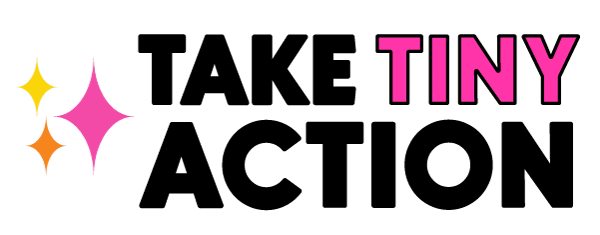
Chances are if you aren’t making progress towards your goals or you’re feeling discouraged after working hard towards them it’s time to re-evaluate. There’s a lot of experimentation in the goal setting process when you’re trying to find a strategy that works. So it’s ok to refine and change.
For example setting a goal to grow your blog readership by 20%. It’s a great goal, but how much of that outcome can you actually control? Sure you can utilize all of the “proven” strategies but that will not guarantee the result. There are simply factors that you can not influence (websites crashing, the fickleness of web surfers, etc). This can be frustrating when you feel you’re putting in a lot of work and not reaping the rewards.
Many times we get caught up setting goals based on a “prize” that is controlled by factors that we cannot always influence. I.e. growing your blog by 20%. There are various factors at play that can affect your ability to achieve that goal. Maybe it’s time to re-evaluate and change your perspective of how you set goals.
Press play:
Outcome Based Goals Vs. Action Based Goals
Outcome based goals are not completely under your control. They are focused on the end result.
Action based goals are completely under your control and reflective of your habits. You can choose to do specific and measurable tasks every day.
Switch from outcome based goals to action based goals
It’s time to experiment. Instead of focusing on outcomes that you can’t completely control, switch gears and try setting goals that command action. Think about it like this, “To achieve an outcome, you must take action”.
Action based goals help with habit development and discipline. You really need to master both if you plan to achieve bigger and badder goals.
Put a new plan together
Here’s a working example, let’s say my goal is to grow my blog by 20%. That’s an outcome based goal because I can’t completely influence the end result of that goals. If I wanted to set this as action based goal, I could say I’m going to publish 12 posts over the next 90-days.
The process:
- Brainstorm your 12 topics and fill in the dates that posts should go live.
- Create a process. Write out every single step that goes into publishing a blog post beginning to end.
- Schedule your process. Don’t just put write a blog post on your calendar. Figure out which pieces of your blog post process you’ll be doing on a specific day and schedule that in.
- Rinse and repeat over the course of 90-days.
Set up checkpoints to measure progress
At the end of 90-days you’ll know whether or not you wrote and published 12 posts. That was the goal. So you either published 12 posts or you didn’t.
You’ll also be able to track stats from the beginning to the end of the quarter to see if the action helped you reach that outcome of growing your blog 20%.
Doing the work is always good. Try switching up how you set your goals and see if you feel more accomplished.
LIKE THE SHOW?
Ratings help the show grow and rank better in iTunes. If you enjoy the doses of inspiration being dished out, take a moment to give Pimp Your Brilliance a 5-star rating on iTunes.
